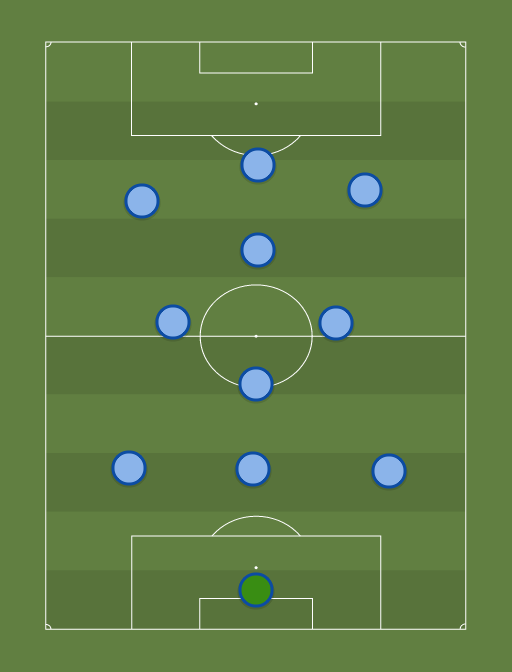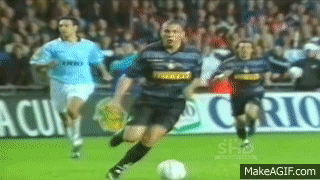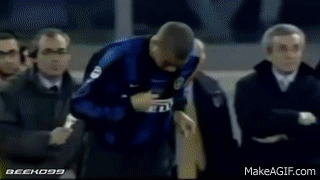In the post-war era, Real Madrid were about as far from the affluent Galacticos of the modern day as you could get. As Spain emerged desperately poor from the wreckage of its Civil War, it was Barcelona who found themselves at the centre of the country's growing industrial revolution.
With Barcelona's population swelled by the arrival of thousands of migrants from the poverty-stricken south, the city's football team was also finding itself in a position of power. The side dominated La Liga and won four titles, while also picking up three Copas del Generalismo and two Copas Latinas between 1948 and 1953.
As historian David Goldblatt asserts:
''Real Madrid were not a team of affluence but in the final moment in a long cycle of professionalism and modernisation in Spanish football that had begun in the late 1920s, was interrupted and set back by the Civil War and post-war isolation, and only began to recover in the 1950s.''
At that time, the man spearheading Real's return to the top of the Spanish (and ultimately European) game was Santiago Bernabeu. A Civil War veteran, he had been a club member since the age of 15 and was a player, team captain, board director and even coach before running for president. Bernabeu actually had a match against Barcelona to thank for his election, after a clash in 1943 that was marred by fan violence, the presidents of both clubs were forced to resign and Bernabeu was brought in. Over the next decade, Goldblatt notes, he ''laid the architectural, economic and political foundations of Real's success."
First up was the building of a new 75,000-capacity stadium (extended to 125,000 in 1954) called the Nuevo Estadio Chamartin, which was opened in 1947; among other potential money spinners, Real's finances began to grow. Tight accounting and the arrival of a large group of middle-class socios, in conjunction with the increased numbers that could now flock to see the side play, made them wealthy by the standards of the day. But Real's most lucrative business move did not involve anything more than the signing of a single player: Alfredo Di Stefano.
Although he was little known in Europe, the Argentine, nicknamed
La Saeta Rubia (The Blond Arrow), had won six league titles in Argentina and Colombia and also played internationally for both countries. He would become ''the brains, the lungs, the inspiration and often the sword of Real Madrid over the next decade," but his transfer to Spain was about as controversial as they come and involved a bitter tug-of-war with rivals Barcelona. The exact course of events has been debated over the years and conspiracy theories have emerged since, but a balanced account can be found in Phil Ball's book on Spanish football history, "Morbo."
Di Stefano had left River Plate to join Colombian side Club Deportivo Los Millonarios in Bogota in 1949 after a players' strike in Argentina. Despite an incredibly tense political situation that descended into Civil War in Colombia (over a quarter of a million people died over the following three years) the
Ballet Azul (Ballet in Blue) provided relief for the population and the club's style of football played was mesmeric, with Di Stefano at its heart.
Because of the fighting, FIFA had placed a ban on the Colombian professional league which allowed it to break the rules over signing foreign players and smoothed Di Stefano's arrival. But in 1951, an agreement was reached in Lima that would allow Colombia back into FIFA -- and to play friendlies against foreign teams -- on the proviso that the league would get rid of all its foreign stars.
The agreement allowed Millonarios to take their players on a lucrative global tour in 1952 that took in Uruguay, Peru, Argentina and Bolivia, before ending up in Spain. Winning in Valencia, Seville and then Madrid, it was in the capital that Di Stefano attracted the most attention. The evening before a game against Real, Bernabeu emerged from a radio broadcast with the words: "Este tio huele a buen futbol" ("This kid smells of good football"). But Real were not the only club to take note, as Barca chief Pepe Samitier was also in attendance.
The Catalans, in fact, looked most likely to seal Di Stefano's signature in the early stages, although they faced problems over who to deal with. The confusion over his exit from Argentina saw both Millonarios and River Plate claim to own his registration and Barcelona negotiator Ramon Trias Fargas was able to strike a deal with River, but not with Millonarios, who were upset by the bullying tactics of the club and an unpaid debt of $5,000 owed to them by the player himself.
After a tour to Venezuela, Di Stefano refused to return to Colombia and, instead, travelled to Barcelona with his family. A giddy Catalan press proclaimed a deal had been done, but that was far from the truth. Author Jimmy Burns, in his book "Barca: A People's Passion," maintains that Trias Fargas almost had a deal in the bag after Millonarios backed down from their demands for a $40,000 fee, accepting a $10,000 transfer that also included paying off Di Stefano's debt and a friendly match in which the Colombians would receive all the proceeds.
Barca president Marti Carreto, however, would not back down: He wanted the deal to be worth $10,000 alone, with no concessions. Carreto's motives have become the subject of much debate, with some claiming that he was put under intense pressure by the government, while he always maintained that he had the club's best ''sporting and financial'' interests in mind. Whatever the reasons, Barca's hold on the Argentine slipped and Madrid quickly pounced.
As Madrid entered the negotiations, the Spanish Football Federation passed a law banning the acquisition of foreign players -- ''giving the government a role as broker," according to Burns. Di Stefano would be excluded from this ban if Barca dropped their attempts to sign him and, ultimately, the two clubs agreed to share him on a yearly basis with Madrid for a period of four seasons. The deal was signed on Sept. 15, 1953, but the Catalan press did not react well and Carreto was forced to resign.
Nine months of negotiating came to a head as the interim board who replaced him agreed to let Di Stefano join Real for a compensation payment of 5.5 million pesetas. As with Carret, the reasons for the decision are still disputed to this day: Barca say that they were put under pressure by General Franco's regime, while Real maintain that the decision was voluntary. However, the result was that the Blond Arrow was registered as a Real player and the rest is history.
With his future secure, a few weeks into his Real Madrid career Di Stefano would come face-to-face with the club he almost joined and, in his first ever
El Clasico game, he scored his first two official goals for his new side. It took all of 10 minutes for the Argentine to stab home from close range after Barca goalkeeper Juan Zambudio Velasco just failed to reach a squared cross and before halftime Real were rampant.
A poster advertising Di Stefano's appearance in the film "Saeta Rubia" in 1956.
Two goals in two minutes from Roque Olsen settled the tie, but Di Stefano's clever run into the box resulted in a fourth as Luis Molowny smashed home to make it 4-0 before the break. The second half saw just a single goal, but it was Di Stefano again as he ran through on goal to put Velasco off balance and slide the ball into the net. With a cool flick of his boot, Di Stefano made the final score 5-0 and gave Real the momentum in the title race. It was a personal performance that was described as ''brilliantly versatile'' by the press and summed up the player perfectly.
With Barcelona defeated, Eduardo Galeano later wrote in his profile of the man:
"The entire playing field fitted inside his shoes. From his feet the pitch sprouted and grew ... he ran and reran the field from net to net. He would change flanks and change rhythm with the ball from a lazy trot to an unstoppable cyclone; without the ball he would evade his marker to gain open space, seeking air whenever a play got choked off. ... He never stood still. Holding his head high, he could see the entire pitch and cross it at a gallop to prise open the defence and launch the attack. He was there at the beginning, during, and at the end of every scoring play, and he scored goals of all colours.''
Based around Di Stefano, Bernabeu continued to build the club behind the scenes
''one stone at a time,'' as he had promised. His cornerstone was, of course, the Argentine, whose form and public image helped lift Real Madrid to unprecedented heights and Barca fans were left with only their dreams about what he could have achieved at Les Corts and the Camp Nou.
What happened next? Despite losing the return
Clasico 5-1 in February 1954, Di Stefano's 27 goals that season helped Real to their first title in 21 years and he received worldwide praise for his performance in his debut campaign in Spain. It would be the first of 12 titles in 16 years and, the following season, Real notched up another 3-0 home win against Barcelona to push them toward another La Liga crown and gain entry into the inaugural European Cup in 1955. It would be their European exploits -- including five consecutive trophies between 1956 and 1960 -- that would secure their place in football history and Di Stefano, with 49 goals in 58 appearances in Europe, would play a major role in their rise to become one of the biggest clubs in the world before he left in 1964.










